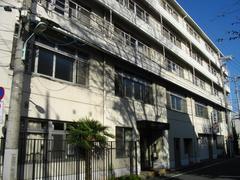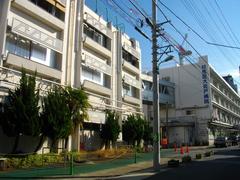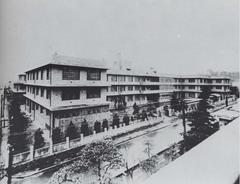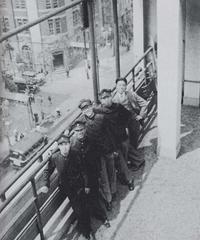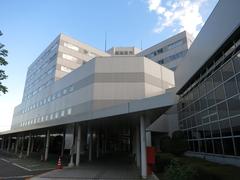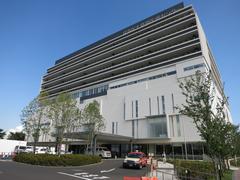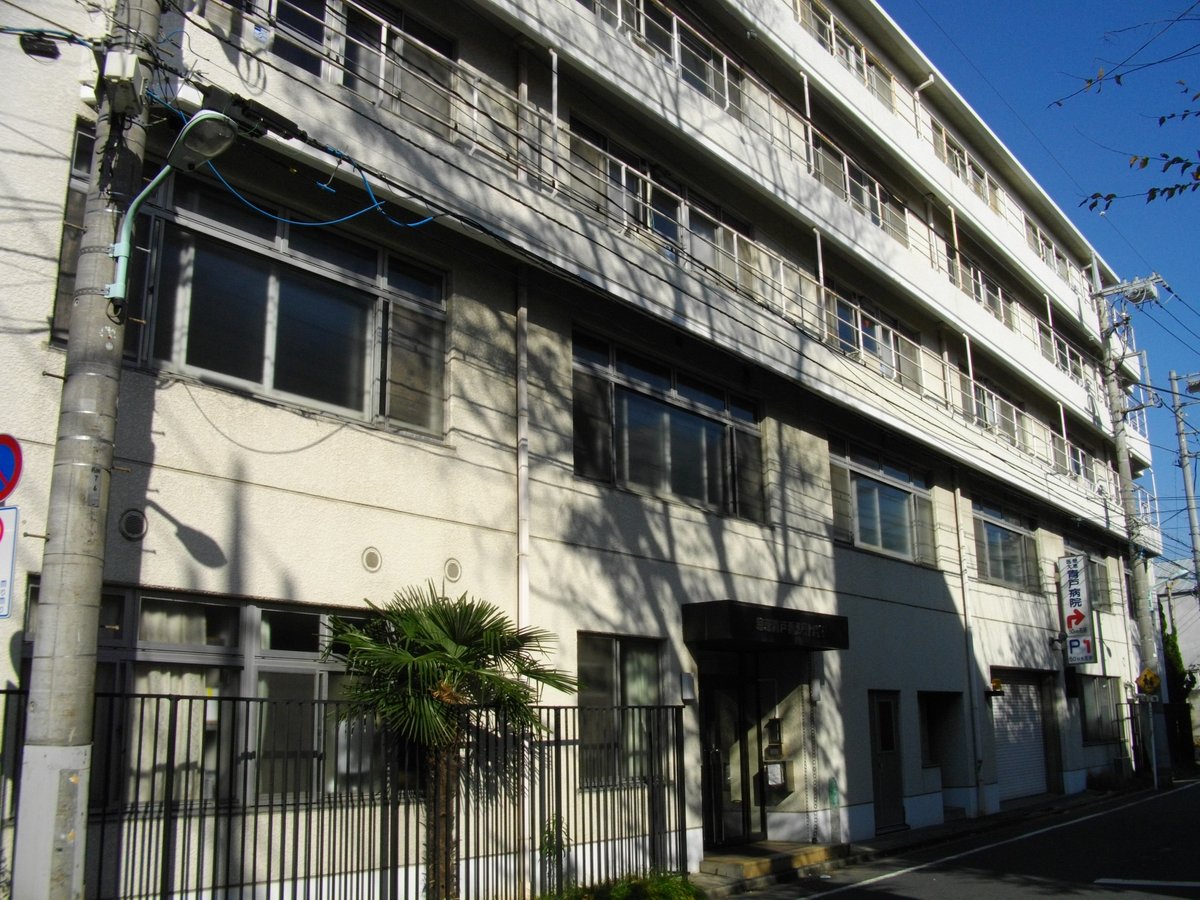
Jikei University School of Medicine Tokyo: Visiting Hours, Tickets, and Comprehensive Guide
Date: 14/06/2025
Introduction
Jikei University School of Medicine, situated in Tokyo’s Minato-ku district, is a cornerstone of Japanese private medical education. Established in 1881 by Dr. Kanehiro Takaki—famed for eradicating beriberi through groundbreaking dietary reforms—the institution has evolved from the “Tokyo Volunteer Hospital” into a leading university, guided by the principle: “Do not just treat the disease, but treat the patient” (病気を診ずして病人を診よ) (Jikei University Official Site; Univ Journal). Its urban campus blends historic legacy with advanced medical innovation and is conveniently located near major Tokyo attractions. Visitors can experience public exhibitions, memorial services, and occasional lectures, making Jikei University a unique destination for both medical professionals and cultural explorers (Jikei University School of Medicine: Campus Guide; Jikei University School of Medicine Visiting Information).
This detailed guide covers the university’s history, academic structure, key facilities, and all practical information for visitors—enabling you to make the most of your visit to this prestigious Tokyo institution.
Contents
- Founding and Development
- Evolution as a Modern Medical University
- Milestones and Contributions
- Cultural and Social Impact
- Campus Layout and Location
- Facilities Overview
- Academic Programs and Philosophy
- Visiting Information (Hours, Tickets, Access)
- Travel and Accessibility
- Nearby Attractions
- Visitor Etiquette and Protocols
- FAQ
- Contact and Further Information
- Visuals and Media Suggestions
- Conclusion and Call to Action
Founding and Early Development
Jikei University School of Medicine (東京慈恵会医科大学, Tōkyō Jikeikai Ika Daigaku) was established in 1881 as the “Yūshi Kyōritsu Tokyo Byōin” or “Tokyo Volunteer Hospital” by Dr. Kanehiro Takaki. The institution was founded to serve underserved communities, rooted in philanthropy and public service (Jikei University Official Site).
By 1887, it became the “Tokyo Jikeikai Hospital” with backing from notable figures like Eiichi Shibusawa. “Jikei,” meaning “Mercy and Benevolence,” became the ethos for both education and clinical care (Univ Journal).
Evolution as a Modern Medical University
In 1921, the institution became the Jikei University School of Medicine, authorized to confer medical degrees and expand its educational and research activities. Today, Jikei University encompasses four affiliated hospitals, serving as a major center for clinical training in Tokyo (Jikei University Official Site).
The curriculum emphasizes scientific rigor, small-group practice-based learning, and a holistic approach to patient care—traits that distinguish Jikei University’s academic philosophy (Univ Journal).
Milestones and Contributions
Public Health Leadership
Dr. Takaki’s preventive measures against beriberi are a landmark in global public health (Univ Journal). The university was an early adopter of integrated curricula and problem-based learning, influencing national reforms in Japanese medical education (PubMed).
Philanthropy and Community Engagement
Jikei’s roots in community-driven care continue with ongoing health initiatives and patient-centered programs, supported by a tradition of philanthropy (Jikei University Official Site).
Research and Innovation
The university is recognized for research in regenerative medicine, clinical studies (e.g., CPR outcomes), and palliative care, with collaborations spanning top universities in Japan (Univ Journal).
Cultural and Social Impact
Symbol of Modern Japanese Medicine
Jikei is a model for integrating Western medicine with Japanese values, emphasizing holistic, patient-centered care (Jikei University Official Site).
Memorial Traditions
Home to Japan’s oldest autopsy memorial service, Jikei honors those who contribute to medical science, reflecting deep respect for life (Univ Journal).
National Standing
Consistently ranked among Japan’s top private medical schools, Jikei holds a prominent place in national medical education (EduRank).
Campus Layout and Location
The main campus is at 3-25-8 Nishi-Shimbashi, Minato-ku, Tokyo, within walking distance of Tokyo Tower and well-served by public transport such as Shimbashi and Toranomon stations. The compact campus integrates academic buildings, research centers, and affiliated hospitals, promoting interdisciplinary collaboration and convenient access for students and visitors. The location is surrounded by restaurants, shops, and cultural sites, offering a vibrant urban experience.
Facilities Overview
Academic Buildings and Lecture Halls
Modern lecture halls include a 300-seat auditorium with advanced tech for interactive and remote learning. Classrooms support both large lectures and small-group tutorials, and are continually upgraded.
Laboratories and Research Centers
Jikei offers specialized laboratories in genetics, medical sciences, and space medicine, supporting both undergraduate and graduate research. Notable research centers contribute to medical information, continuing education, and translational medicine, publishing in both English and Japanese journals.
Clinical Facilities and Affiliated Hospitals
- Jikei University Hospital: Main teaching hospital with comprehensive care and clinical rotations.
- Katsushika Medical Center, Daisan Hospital, Kashiwa Hospital, Harumi Triton Clinic: Each offers specialized and community-based care, supporting a broad spectrum of medical education.
- Operating facilities include advanced imaging equipment and live transmission capabilities for educational purposes.
Library and Learning Resources
The university library provides extensive access to medical literature, journals, electronic databases, and research support services.
Student Support
Academic counseling, career guidance, and administrative support are available. Although dormitories are not provided, assistance is offered in securing off-campus housing.
Academic Programs and Philosophy
Jikei University comprises the School of Medicine and School of Nursing, offering bachelor’s and doctoral degrees. The curriculum is rooted in Dr. Takaki’s patient-centered philosophy, emphasizing both core scientific knowledge and practical clinical experience. Early clinical rotations, research training, and specialized electives are key components.
The student body is selected through competitive exams, with a close-knit cohort of 1,000–1,999 students. International applicants are welcome, though instruction is primarily in Japanese.
Visiting Jikei University School of Medicine
Visiting Hours and Access
- General Public: Access is typically weekdays, 9:00 AM–5:00 PM for exhibitions and memorial events. Hospital and clinical areas have restricted access.
- Academic Visitors: Prior arrangement is necessary for tours or academic meetings.
- No ticket is required for campus visits or memorial events, but some programs require registration (Jikei University School of Medicine Visiting Information).
Directions
- Main Campus: 3-25-8 Nishi-Shimbashi, Minato-ku, Tokyo 105-8461.
- Nearest Stations: Shimbashi (JR/Tokyo Metro), Toranomon (Tokyo Metro), Onarimon, Uchisaiwaicho, Kamiyacho.
- For details: Campus Access.
Accessibility
The campus is fully accessible, with ramps and elevators. Visitors with special needs should notify the university in advance to ensure accommodations.
Visitor Etiquette
- Dress modestly and appropriately.
- Remain quiet, especially near patient care areas.
- Photography is only permitted outdoors and in designated areas.
- Follow all posted protocols and staff instructions.
Travel Tips and Nearby Attractions
- Local Language: Japanese is standard; some staff can assist in English.
- Dining: On-campus cafeterias and many nearby restaurants serve Japanese and international cuisine.
- Accommodation: No on-campus lodging, but many hotels are available in Minato and Shimbashi.
- Nearby Sights: Tokyo Tower, Hamarikyu Gardens, Shiba Park, Zojoji Temple, and local museums.
Frequently Asked Questions (FAQ)
Q: Can I freely tour the campus?
A: Public areas are open during business hours; other areas require prior permission.
Q: Are guided tours or tickets necessary?
A: No ticket is required; guided tours are limited and typically arranged for academic visitors.
Q: Is the campus accessible for people with disabilities?
A: Yes, the campus is equipped with elevators, ramps, and accessible restrooms.
Q: What is the best way to reach the campus?
A: Use JR or Tokyo Metro lines to Shimbashi, Toranomon, or other nearby stations.
Q: Is English spoken on campus?
A: English support varies; international affairs staff can assist.
Contact and Further Information
- Address: 3-25-8 Nishi-Shimbashi, Minato-ku, Tokyo 105-8461, Japan
- Phone: +81-(0)3-3433-1111
- Email (International Affairs): [email protected]
- Official Website: https://www.jikei.ac.jp/university/
- Elective Program Info: jikeicia.jp
Visuals and Media Suggestions
- High-resolution campus entrance and hospital images (with alt text: “Jikei University School of Medicine main campus entrance in Tokyo”)
- Map highlighting nearby train stations
- Photos of Tokyo Tower and Hamarikyu Gardens
Conclusion and Call to Action
Jikei University School of Medicine exemplifies Japan’s dedication to compassionate medical care, innovative research, and rigorous education. With its accessible location, historical roots, and integration of modern facilities, it is both a functional academic hub and a site of cultural significance.
For updates on visiting, events, and academic programs, consult the official website and follow Jikei University on social media. Download the Audiala app for curated guides and audio tours of Tokyo’s most significant educational and cultural sites.
Start your journey into Japanese medical heritage at Jikei University School of Medicine—where history, education, and innovation converge.
Sources and Further Information
- Jikei University Official Site
- Univ Journal
- PubMed: Medical education reforms in Japan
- EduRank: Jikei University School of Medicine Ranking
- Jikei University School of Medicine: Campus Guide
- Jikei University School of Medicine Visiting Information
- Times Higher Education: Jikei University School of Medicine profile
- Touristlink: Jikei University School of Medicine Overview
